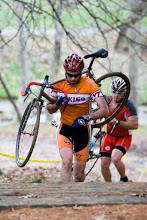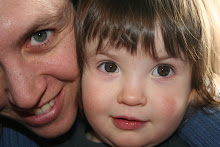A few weeks ago I went to the Tiputini Biodiversity Station down in the Amazonia lowlands of Ecuador. This is the most biodiverse area on the planet and a true marvel. Actually, the amazing thing about visiting the Amazon is not so much what you see but what you don't. Unless you are with a guide, you won't see hardly anything. Go with a guide, or spend lots of time there, and you will start to see things. I am not good yet, but getting better. On this trip I saw 5 species of monkeys, peccary, lots of frogs and birds, and of course, lots of trees! I was there 5 days but the first and last days were travel days. To get to Tiputini you start with a 30min flight from Quito to Coca. Then you take a taxi to the banks of the Napo river. This river is one of 8 that become the Amazon and the elevation here is about 250m. Then you motor boat downstream for 2 hours to Pompeya. Here you go through a military control that is run by the oil companies and then board a bus. The bus ride is another 2 hours on the Maxxis road, also made by the oil companies. Needless to say, oil companies make some nice gravel roads! The road has also allowed lots of settlers to move in so while it looks like 'jungle' there is a lot of clearing and farming going on. When the road crosses the Tiputini river you get on a motorized canoe for a 2 hour ride to the station. Long day!
My purpose of going to Tiputini was to work with my colleague Brant Ryder on wire-tailed manakins. He has been studying them for about a decade and I joined in a couple of years ago. We have published a couple of papers on their hormones and social networks and just recently found out that our National Science Foundation grant to continue these studies will be funded. So now we have to get to work! So we spent a few days visiting the territories, marking birds, making sure everyone is where they should be and behaving as they should. It was good fun! And every night I went on night hikes to see what was around. Most of these pics come from those hikes.
The scariest moment of my trip was nearly getting bit by a fer-de-lance, Bothrops asper. I was walking down the trail behind Brandt and it was raining. A tree had fallen across the trial and we had to climb over the branches and trunk. As I was climbing, my foot slipped and I put my hand on the trunk to steady myself…. but as I was putting my hand down I looked where it would land and there was the snake. I'm not sure if my hand actually touched the snake or right next to it as I jerked it back instantaneously. Luckily, no bite! I did have to take a break after that as my heart was racing pretty fast. I guess that is the reality of working in the jungle!
At night the jungle is alive with frogs. Here are a few beauties!
And sleeping anoles!
These guys were everywhere.
Nice phyla medusa we found .
And a little Dipsas snake. These guys eat snails!
And the star of the show, the male wire-tailed manakin!
We had a good meeting! These guys are beautiful but actually finding them in the forest is remarkably hard until you learn what to look for.
Another nice frog.
On the boat ride out, opposite of the trip in, we got to see a herd of capybara on the banks of the river. We also saw a pink river dolphin. Cool BUT, a few weeks before a group saw a jaguar…. jealous.
There was a tree fall into the river and the crew started picking fruit and called it chicle.
Quite tasty, like bubblegum. And full of latex which makes a bit of a mess.
And a couple of river turtles on a log.


































